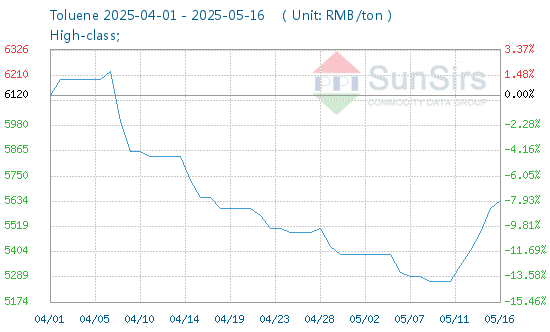
This article is your comprehensive guide, shedding light on the crucial role these auxiliaries play in textile processing. Whether you're an industry professional or a curious learner, our insights will help you understand the intricacies and importance of these chemicals in achieving the perfect blend of color, quality, and sustainability in textiles. Dive into the depths of Textile Dyeing Auxiliaries with us and discover how they revolutionize fabric dyeing processes.
In the dynamic world of textile manufacturing, Textile Dyeing Auxiliaries play a pivotal role in enhancing the quality and efficiency of the dyeing process. These specialized chemicals are integral to modern textile production, offering a range of functions that are essential for achieving the desired fabric properties.
Textile Dyeing Auxiliaries are a class of chemicals used in the dyeing process to facilitate and stabilize the application of dyes to fabrics. These auxiliaries include a variety of agents such as leveling agents, dispersants, emulsifiers, and pH regulators. They are crucial for ensuring uniform coloration, improving fastness properties, and enhancing the overall appearance of the textile product.
The use of dyeing auxiliaries in textile processing can significantly improve the efficiency and outcome of the dyeing process. These auxiliaries serve various essential functions such as:
Textile Dyeing Auxiliaries encompass a wide range of chemicals, each serving specific purposes in the textile dyeing process. Understanding these various types is crucial for selecting the right auxiliary for a particular fabric or dyeing method. Let’s explore some of the key types of dyeing auxiliaries used in the textile industry.
Among the diverse range of auxiliaries, two of our flagship products stand out: Sodium Formaldehyde Sulfoxylate and Zinc Formaldehyde Sulfoxylate. These compounds are renowned for their effectiveness in textile processing, offering unparalleled benefits.
Sodium Formaldehyde Sulfoxylate (SFS), often used as a reducing agent, plays a critical role in dyeing natural and synthetic fabrics. It ensures even and consistent coloration, enhances color brightness, and is particularly effective in vat and reactive dyeing processes.
Zinc Formaldehyde Sulfoxylate (ZFS), on the other hand, is known for its unique properties in improving dye uptake and fabric strength. It is especially beneficial in the dyeing of delicate and high-performance fabrics, ensuring color vibrancy and longevity.
Incorporating these advanced auxiliaries into your textile dyeing processes can significantly elevate the quality and appeal of your finished products, marking a notable difference in the competitive textile market.
The journey to a vibrant and lasting textile product begins long before the dye touches the fabric. In the pre-dyeing stage, cleaning and preparing fabrics is crucial. This involves removing impurities and preparing the textile fibers to absorb dyes effectively.
Textile Dyeing Auxiliaries play a significant role in fabric preparation. They enhance the fabric's absorbency, ensure uniform wetting, and stabilize the fabric structure, setting the stage for optimal dye application.
The heart of the textile dyeing process lies in the intricate interaction between dyes and auxiliaries. This stage is where the magic happens, with auxiliaries playing a pivotal role in binding the dye to the fabric, ensuring an even application and vibrant hues.
Achieving color fastness and uniformity is a key challenge in textile dyeing. Auxiliaries are instrumental in this, aiding in the fixation of dyes, reducing color bleeding, and ensuring the longevity of the color.
Once the dyeing is complete, the post-dyeing stage involves various finishing treatments. These treatments aim to enhance the fabric's aesthetic and functional qualities, such as softness, luster, and wrinkle resistance.
The role of auxiliaries in ensuring the durability and quality of the dyed fabric cannot be overstated. They help in setting the color, improving the wash fastness, and imparting desired mechanical and chemical properties to the fabric.
Textile Dyeing Auxiliaries are not just theoretical components of the textile industry; their practical applications are vast and varied. In this section, we explore how these auxiliaries are put to use in real-world scenarios, showcasing their versatility and indispensability in the textile dyeing process.
One of the most significant applications of dyeing auxiliaries is in the treatment of different fabric types. From natural fibers like cotton and wool to synthetic fibers such as polyester and nylon, each fabric type requires specific auxiliaries to achieve optimal dyeing results. Auxiliaries ensure compatibility between the fabric and dye, leading to vibrant and long-lasting colors.
Textile auxiliaries are also pivotal in enhancing specific fabric properties. For instance, in sports and performance wear, auxiliaries contribute to the fabric's breathability, moisture-wicking, and durability. In home textiles like curtains and upholstery, they can add properties like flame retardancy and stain resistance.
In today's environmentally conscious world, the role of textile dyeing auxiliaries in promoting sustainability is increasingly crucial. Eco-friendly auxiliaries help in reducing water usage, minimizing chemical waste, and ensuring biodegradability, thereby supporting sustainable textile manufacturing practices.
The practical applications of Textile Dyeing Auxiliaries are a testament to their importance in the textile industry. By enhancing fabric properties, ensuring sustainability, and catering to a wide array of fabric types, these auxiliaries play a key role in the production of high-quality, durable, and aesthetically pleasing textile products.
Selecting the right textile dyeing auxiliaries is crucial for achieving desired results in fabric dyeing. This process can be complex, given the variety of fabrics and dyeing processes. Here, we provide a guide to help you make informed decisions about the auxiliaries best suited for your textile dyeing needs.
The first step in choosing the right dyeing auxiliary is understanding the specific requirements of your fabric. Different fibers – natural, synthetic, or blends – react differently to dyes and chemicals. It's essential to select auxiliaries that are compatible with the fabric's properties to ensure effective dye uptake and color fastness.
Different dyeing processes, such as reactive dyeing, vat dyeing, or acid dyeing, require specific types of auxiliaries. Understanding the nuances of your dyeing process will help you choose auxiliaries that enhance dye absorption, ensure even color distribution, and aid in the fixation of the dye on the fabric.
In today's eco-conscious market, considering the environmental impact of dyeing auxiliaries is vital. Opt for environmentally friendly auxiliaries that minimize water and chemical usage, reduce effluent load, and are biodegradable, thus contributing to sustainable textile production.
Lastly, ensure that you source your textile dyeing auxiliaries from reliable vendors who offer high-quality products. Quality auxiliaries not only yield better dyeing results but also ensure consistency and reliability in your production process.
As we conclude our journey through the dynamic world of Textile Dyeing Auxiliaries, we invite you to experience the expertise and innovation of High Mountain Chem, China's leading manufacturer in this field. Our commitment to quality, sustainability, and technological advancement sets us apart in the global textile industry. Explore our range of superior Textile Dyeing Auxiliaries and learn more about our pioneering solutions at https://www.highmountainco.com/. Join us in shaping a more vibrant and sustainable future in textile dyeing.









